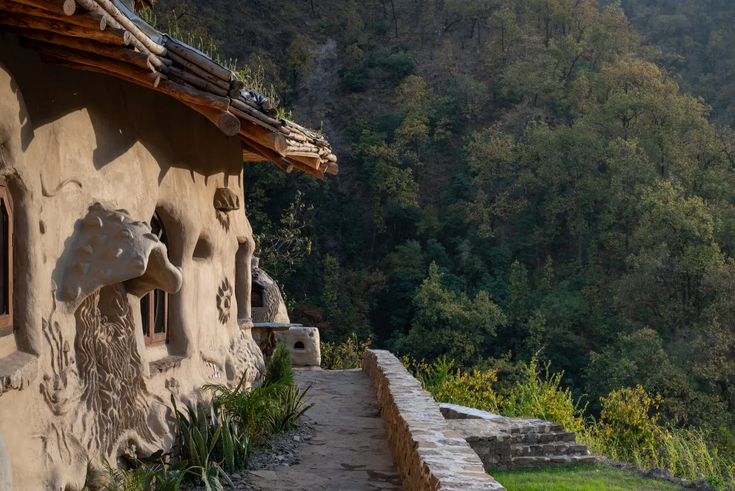Siblings Ansh and Raghav Kumar started to build this homestay in Rishikesh, India in 2020. They remembered a picture of their childhood––a quaint home nestled among mountains, with a river flowing nearby and the sun smiling upon them. “It was during the pandemic that we began to question our state of living and being. Our climate anxiety peaked. We had so many bottled-up feelings that we just had to act,” Ansh shares. “And if birds and ants can make their homes, why can’t we?”
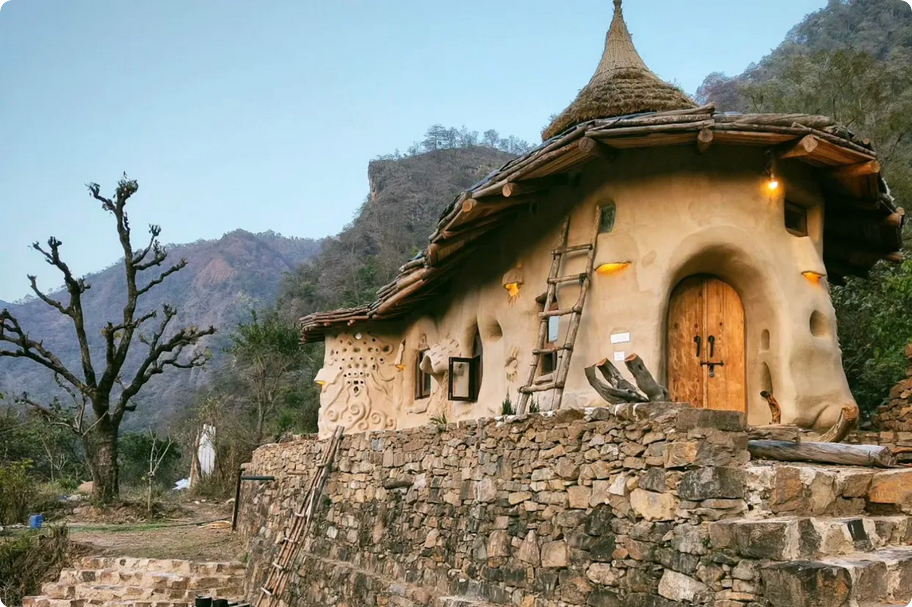 At that time, Raghav had graduated from a college of architecture and was three years into working with a German architectural firm on projects that ranged from play schools and houses to auditoriums. “I realized sustainability in a conventional architecture setup is limited. Despite having good intentions, modern firms often fall victim to greenwashing or simply follow trends like achieving net zero. Plus, there was a huge disconnect between architect and labor, which I saw daily at the site. Eventually, I felt the need to use my creative agency as a designer to make the difference I sought,” he reflects.
At that time, Raghav had graduated from a college of architecture and was three years into working with a German architectural firm on projects that ranged from play schools and houses to auditoriums. “I realized sustainability in a conventional architecture setup is limited. Despite having good intentions, modern firms often fall victim to greenwashing or simply follow trends like achieving net zero. Plus, there was a huge disconnect between architect and labor, which I saw daily at the site. Eventually, I felt the need to use my creative agency as a designer to make the difference I sought,” he reflects.
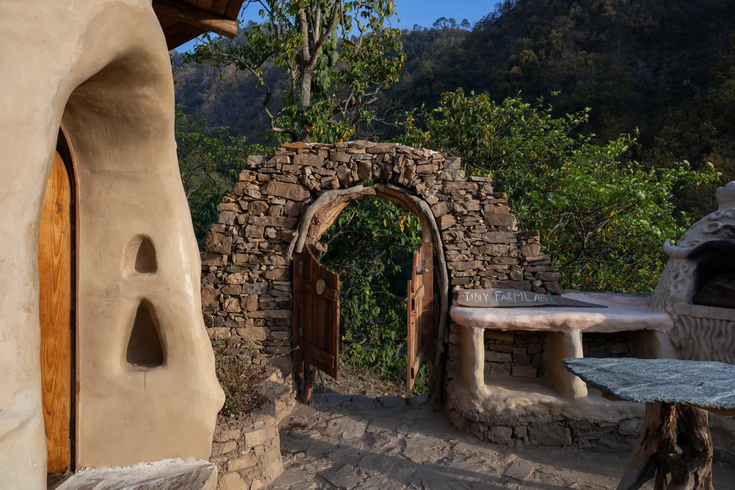 Ansh, on the other hand, had chosen the artistic path, freelancing between personal and commercial projects, creating sculptural objects and immersive optical art installations.
Ansh, on the other hand, had chosen the artistic path, freelancing between personal and commercial projects, creating sculptural objects and immersive optical art installations.
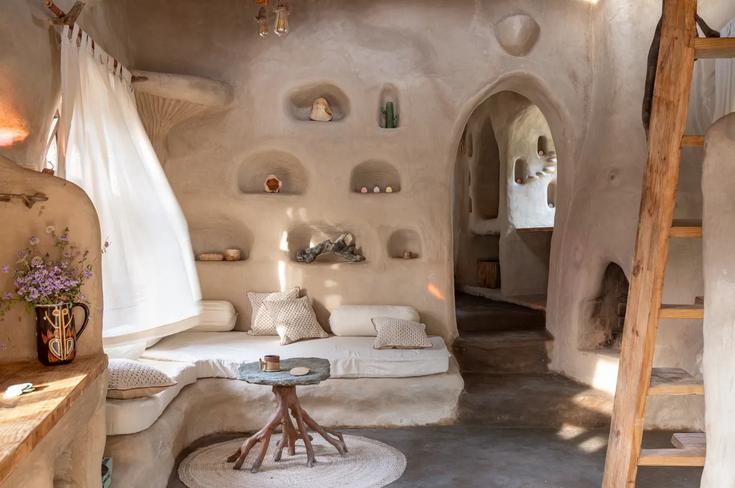 Initially their quest for the ideal location to build a home was met with disappointment. “The state of our villages left us sad. Most of the houses are being constructed using cement. The government’s characterization of vernacular housing as temporary dwellings diminishes their appeal,” Raghav shares. This stigma has tarnished the reputation of mud houses and structures made from mud, wood or other indigenous materials, leading many local villagers to favor cement structures—a misguided symbol of prosperity and progress.
Initially their quest for the ideal location to build a home was met with disappointment. “The state of our villages left us sad. Most of the houses are being constructed using cement. The government’s characterization of vernacular housing as temporary dwellings diminishes their appeal,” Raghav shares. This stigma has tarnished the reputation of mud houses and structures made from mud, wood or other indigenous materials, leading many local villagers to favor cement structures—a misguided symbol of prosperity and progress.
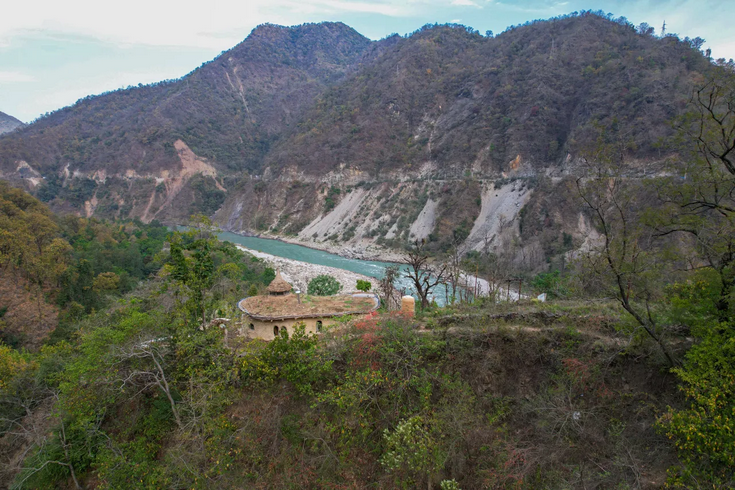 They discovered land on a hilltop offering a panoramic view of the Ganges. The location boasted a subtropical climate, pleasant for most of the year. The challenges of remote mountain life and wildlife both worried and excited them. “We spent a lot of time with the local villagers, immersing ourselves in their way of life, especially with the eldest grandmother,” shares Ansh. “On other days, we would sit and observe the sun, wind and stars to plan the architecture of the house, including the placement of the entrance, sleeping and bathing area and a tiny fireplace. It was based on intuition,” Ansh adds. Their intuition expanded after listing the project on Workaway, a platform connecting travellers with homestay experiences in exchange for a few hours of work each day. Over 90 people from 18 countries contributed to building the house over 547 days.
They discovered land on a hilltop offering a panoramic view of the Ganges. The location boasted a subtropical climate, pleasant for most of the year. The challenges of remote mountain life and wildlife both worried and excited them. “We spent a lot of time with the local villagers, immersing ourselves in their way of life, especially with the eldest grandmother,” shares Ansh. “On other days, we would sit and observe the sun, wind and stars to plan the architecture of the house, including the placement of the entrance, sleeping and bathing area and a tiny fireplace. It was based on intuition,” Ansh adds. Their intuition expanded after listing the project on Workaway, a platform connecting travellers with homestay experiences in exchange for a few hours of work each day. Over 90 people from 18 countries contributed to building the house over 547 days.
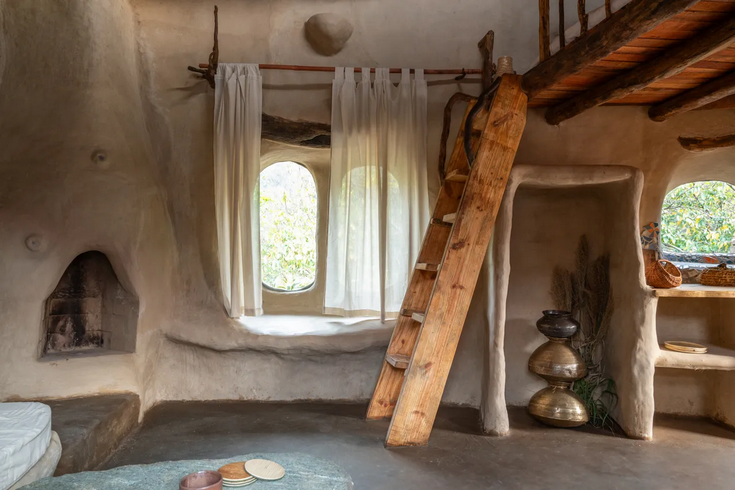 The 600 square-foot house, crafted from mud sourced from near the site, bears the imprint of the hands that shaped it and is adorned with a facade featuring sculptural works. “Contrary to assumptions, mud is a very safe material to build a house with. We engaged in daily stomping and dancing rituals, mixing the mud with straw and water to give it strength, all while playing music from all over the world,” Raghav adds. The house stands upon a foundation of robust stone masonry and is sheltered under a canopy of eucalyptus wooden beams, intricately woven into a reciprocal roof design. A living garden graces its exterior, not only enhancing cooling properties but also seamlessly blending with the surrounding landscape, blurring the boundaries between built environment and wilderness. Thousands of stones, both large and small, carried one by one, fortify the walls.
The 600 square-foot house, crafted from mud sourced from near the site, bears the imprint of the hands that shaped it and is adorned with a facade featuring sculptural works. “Contrary to assumptions, mud is a very safe material to build a house with. We engaged in daily stomping and dancing rituals, mixing the mud with straw and water to give it strength, all while playing music from all over the world,” Raghav adds. The house stands upon a foundation of robust stone masonry and is sheltered under a canopy of eucalyptus wooden beams, intricately woven into a reciprocal roof design. A living garden graces its exterior, not only enhancing cooling properties but also seamlessly blending with the surrounding landscape, blurring the boundaries between built environment and wilderness. Thousands of stones, both large and small, carried one by one, fortify the walls.
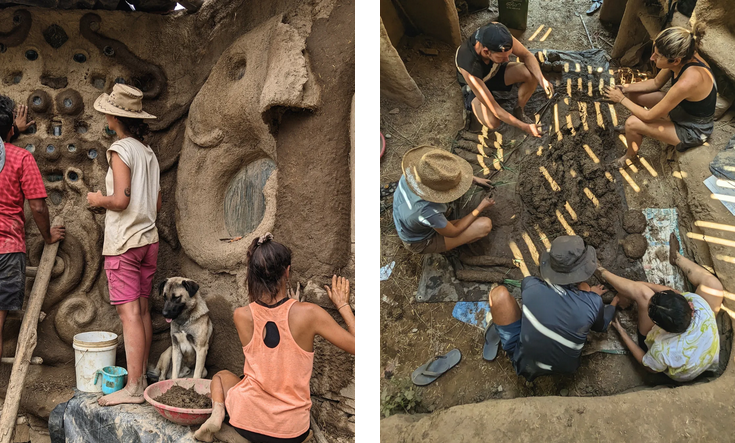 “We wanted to craft something locally rooted yet beautiful,” Ansh shares. “Our goal was to embrace natural forms and curves, creating an experience that invites people to appreciate its beauty without intellectualizing or objectifying it.”
“We wanted to craft something locally rooted yet beautiful,” Ansh shares. “Our goal was to embrace natural forms and curves, creating an experience that invites people to appreciate its beauty without intellectualizing or objectifying it.”
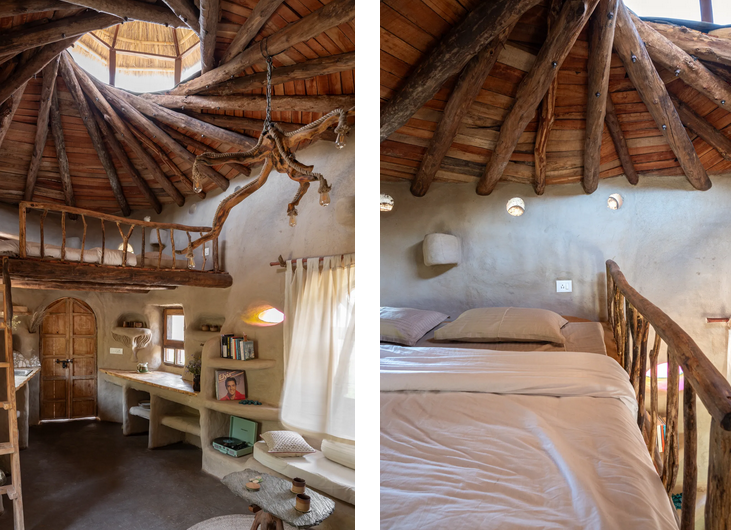 Ansh and Raghav also envision the homestay as a “haven of biomaterials”, showcasing objects crafted from materials consciously sourced from nature and contributed by people around the world through an open call. From a table made using discarded slate found in a village house, to a chandelier crafted from wood found in the river, to bamboo baskets and handmade ceramics, the tiny objects that fill the tiny house embody the same simplicity.
Ansh and Raghav also envision the homestay as a “haven of biomaterials”, showcasing objects crafted from materials consciously sourced from nature and contributed by people around the world through an open call. From a table made using discarded slate found in a village house, to a chandelier crafted from wood found in the river, to bamboo baskets and handmade ceramics, the tiny objects that fill the tiny house embody the same simplicity.
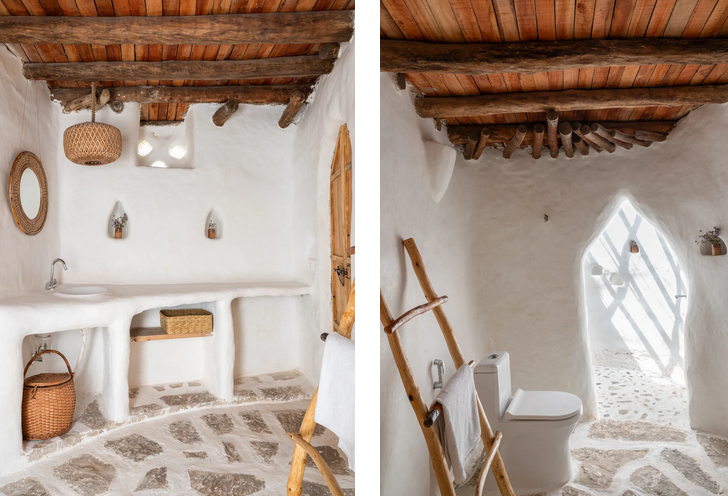 “Trust the process,” says Ansh, reflecting on what they learnt from their hands-on experience. Today, the house is listed as a B&B, welcoming a growing community of like-minded travelers from all over the globe, offering a slow, serene and authentically responsible way of life. Ansh and Raghav are actively involved in training local villagers in ecotourism practices while simultaneously developing educational models to raise awareness about the merits of mud houses––and how anyone can create their own.
“Trust the process,” says Ansh, reflecting on what they learnt from their hands-on experience. Today, the house is listed as a B&B, welcoming a growing community of like-minded travelers from all over the globe, offering a slow, serene and authentically responsible way of life. Ansh and Raghav are actively involved in training local villagers in ecotourism practices while simultaneously developing educational models to raise awareness about the merits of mud houses––and how anyone can create their own.
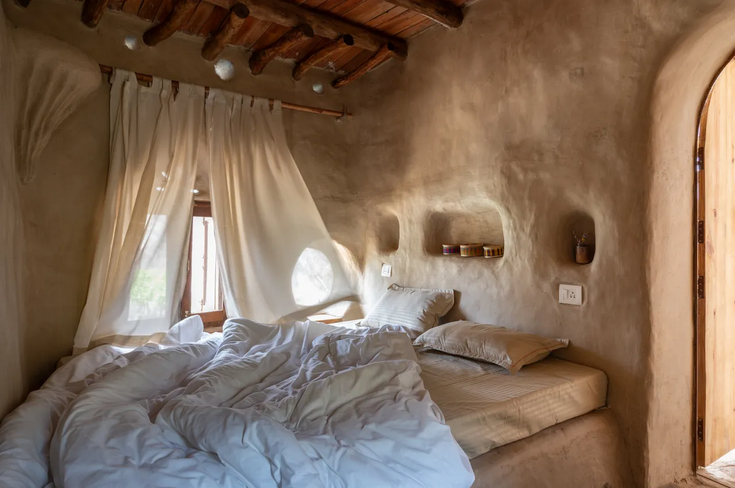 You can read the original article at www.architecturaldigest.in
You can read the original article at www.architecturaldigest.in

